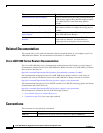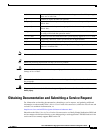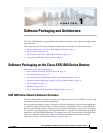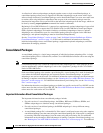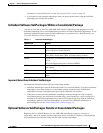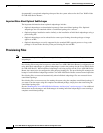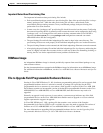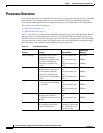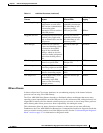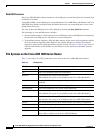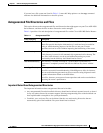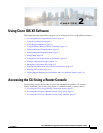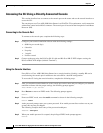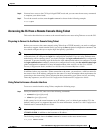
1-6
Cisco ASR 1000 Series Aggregation Services Routers Software Configuration Guide
OL-16506-15
Chapter 1 Software Packaging and Architecture
Processes Overview
Processes Overview
Cisco IOS XE has numerous components that run entirely as separate processes on the Cisco ASR 1000
Series Routers. This modular architecture increases network resiliency by distributing operating
responsibility among separate processes rather than relying on Cisco IOS software for all operations.
This section covers the following topics:
• IOS as a Process, page 1-7
• Dual IOS Processes, page 1-8
Table 1-2 provides a list of the important individual processes for the Cisco ASR 1000 Series Routers.
These processes run in the background, and the CLI on Cisco ASR 1000 Series Routers using Cisco
IOS-XE is identical in look, feel, and usage to the Cisco IOS CLI on most platforms. This information
is provided because it may be useful for checking router state and troubleshooting, but understanding
this information is not essential to understanding most router operations.
Table 1-2 Individual Processes
Process Purpose Affected FRUs
SubPackage
Mapping
Chassis Manager Responsible for all chassis
management functions,
including management of the
HA state, environmental
monitoring, and FRU state
control.
RP (one instance per
RP)
SIP (one instance per
SIP)
ESP (one instance per
ESP)
RPControl
SIPBase
ESPBase
Host Manager Provides an interface between
the IOS process and many of
the information-gathering
functions of the underlying
platform kernel and operating
system.
RP (one instance per
RP)
SIP (one instance per
SIP)
ESP (one instance per
ESP)
RPControl
SIPBase
ESPBase
Logger Provides IOS facing logging
services to processes running
on each FRU.
RP (one instance per
RP)
SIP (one instance per
SIP)
ESP (one instance per
ESP)
RPControl
SIPBase
ESPBase
Interface Manager Provides an interface between
the IOS process and the
per-SPA interface processes on
the SIP.
RP (one instance per
RP)
SIP (one instance per
SIP)
RPControl
SIPBase
IOS The IOS process implements
all forwarding and routing
features for the router.
RP (one per software
redundancy instance per
RP). Maximum of two
instances per RP.
RPIOS



